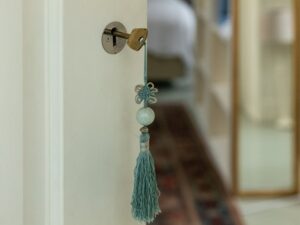A panic room is an excellent addition to any home for many reasons. They are good for natural disasters, threats from the outside, random attacks, and more. Many homes don’t have a panic room, safe room, or anything of the like. All is not lost, however, as creating your own DIY panic room is easier than you might think. This guide will take you through all the panic room basics.
The Definition of a Panic Room
Before you look out how to make a panic room, it is essential that you understand what a panic room is and what it is meant to do. Movies have shown many variants of panic rooms leaving the world with a warped view of them. They don’t all need to have meter-thick doors and high-tech electronics inside.
According to the online dictionary, a panic room is: “A secure room with a separate telephone line within a house, to which a person can flee if someone breaks in.”
Step 1: Why Do You Need the Panic Room
It is important to understand your motivations for making the panic room as this can determine, where you place the room and what materials you make it out of.
For instance, if you require a panic room to take shelter from a tornado, you are not going to want to place it in your attic.
On the other hand, if the panic room is more to protect from spontaneous crime, the room may be on the outskirts of your home or based in the bedroom of the most vulnerable (like a child’s room).
Step 2: What a DIY Panic Room Needs
By the definition of a panic room, the room needs a way of communicating with the outside world, plus it needs to be secure. So, when you are creating your panic room you will want to consider the following options.
The Door
The door is going to be the weakest point of the panic room. Why? Because doors are built to let humans pass through. Because of this, you are going to want to take the security of your door seriously.
You want your door to be sturdy and reinforced.
If using a standard door take care to reinforce it with lightweight materials. Kevlar is a popular option here. Using heavier materials can cause the door to not work as it should. The one exception to this rule is if you are using a vault door.
The Lock
It is important to note that the purpose of the safe room affects the lock. If your panic room is for storing valuables, then you will want to keep the door locked. If the panic room is for escaping too, having one that is always locked will only slow you down.
Consider also, do you want this door to only unlock from the inside? Does the lock need to work from both sides?
Heavy deadbolt locks work well for panic room doors. Seek out the better locks on the market as these will have anti-picking and anti-bumping mechanisms.
The Wall
If you are building your panic room from scratch, you are going to want to make sure you are using sturdy wall materials. Plasterboard is simply not going to hold against any kind of attack, weather-based or human.
Cement walls with metal rods make the wall stronger.
If you already have walls in place but need to strengthen them, cement and the addition of metal pipes are again a good option. But be aware of any existing pipes in the walls. Also, check if you are going to need any building permits. Alternatively, you can add modular ballistic panels to your walls.
DIY Panic Room Essentials
For a most basic panic room, you will need a method of communication. This can be a cell phone, a ham radio, or a telephone line specific for that room. Alarm buttons are also advantageous for getting the word out that you need help.
If you want a panic room that you may need to spend a day or two in, the U.S. Department of Justice Emergency Preparedness handbook recommends the following:
- Non-perishable food (tinned, dry, or even military rations).
- Bottled water or a water supply.
- First aid kit (Include any medications that you or a family member need).
- Batteries.
- Battery-powered lights and radio.
- Important documents.
- Sanitation Supplies.
- Blankets and clothes.
- Extra pair of glasses.
- Cash (or credit cards).
Creating Your Own Panic Room
If you are creating your own panic room and need some advice from the experts, contact The Security and Lock Corporation Miami at (305) 846-9360. We understand that nothing is more important than keeping your home and your family safe.






